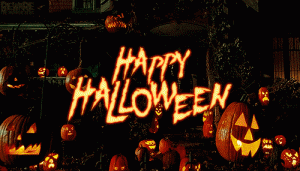Everyone’s favorite time of year has ended. October has come and passed. All the ghosts have traveled back to the world of the dead. The jack-o-lanterns have been thrown away, or still decaying out on the front porch. All the kids have already eaten all the candy that they trick or treated for, much to the parent’s dismay. Costumes have been hung up and retired. Everyone showed up to school the next day, drained of all energy. “It’s time to get out the Christmas lights!” some will say. But there’s been one question pestering my mind ever since I opened the door for that first trick-or-treater. Why? Why do people dress up in costumes? Why do I give them candy? Why do we carve out pumpkins and fill them with light? So I delved into the history of this spooky holiday.
The tradition can be traced back to the Celtics, 2000 years ago, who celebrated a holiday called Samhain (pronounced sow-in). It would be the beginning of the new year, which they celebrated on November 1st. They believed that the boundary between the dead and the living would be blurred on the night of October 31st to November 1st, and ghosts would walk the Earth. When the Roman Empire conquered the Celtics in 43 A.D., they combined two Roman holidays, Feralia and Pomona, and Samhain. Pomona was the day the Romans celebrated the goddess of fruit and trees, and this is where the tradition of bobbing for apples originated.
Fast forward a couple hundred years to about 1000 A.D.: Christianity had spread over Europe, and there was a new holiday called All-Souls Day, celebrated on November 1st. It was celebrated with bonfires, parades, and people dressing up as angels, saints, and devils. Another name for this holiday was All-Hallows. The night before, October 31st, began to be known as All-Hallows Eve, later transforming into Halloween. In Medieval Times, children and poor people would go from house to house and ask for food in exchange for prayers during this time.
In the early colonization of America, the celebration of these holidays was limited because of rigid religious beliefs. Later on, as different European traditions combined with Native American traditions, a distinctly American version of Halloween began to emerge. The first celebrations included “play parties”, which was an annual gathering of people to celebrate the end of the harvest, and people would share stories of their dead and have a good time with each other. When a wave of Irish immigrants came to America, they clashed with old English traditions and it created parts of Halloween as we know it today.
Americans began to go trick-or-treating, going from house to house asking for food or money. In the late 1800s, Halloween began to be more community oriented. Halloween parties became more popular, and people took everything frightening and grotesque out of Halloween. By the 1950s, the holiday became a lot more youth-oriented. Trick or treating was revived during this time, as parents believe that by giving kids candy, they prevent the kids from pulling tricks. Jack-o-lanterns are an Irish tradition that spread to America. The rest of the Halloween history is what we see today.
My question was answered. I now know all the reasons why people do what they do on October 31st. It’s a lot of mashed up traditions from cultures all across the board, that cultivated into America. Well, until next year’s October rolls around, enjoy all the other holidays and their deep history. Happy (belated) Halloween!
Works Cited:
“History of Halloween.” History.com, A+E Networks, 2009, www.history.com/topics/halloween/history-of-halloween
Rutowski, Stephanie, and Lindsey Jacobson. “The History of Halloween.” ABC, ABC News, 30 Oct. 2017, 9:40 AM, abcnews.go.com/US/history-halloween/story?id=50715177.

So great! except you have no proof. no material no proof
yeah, I thought it wasn’t that great. do not recommend